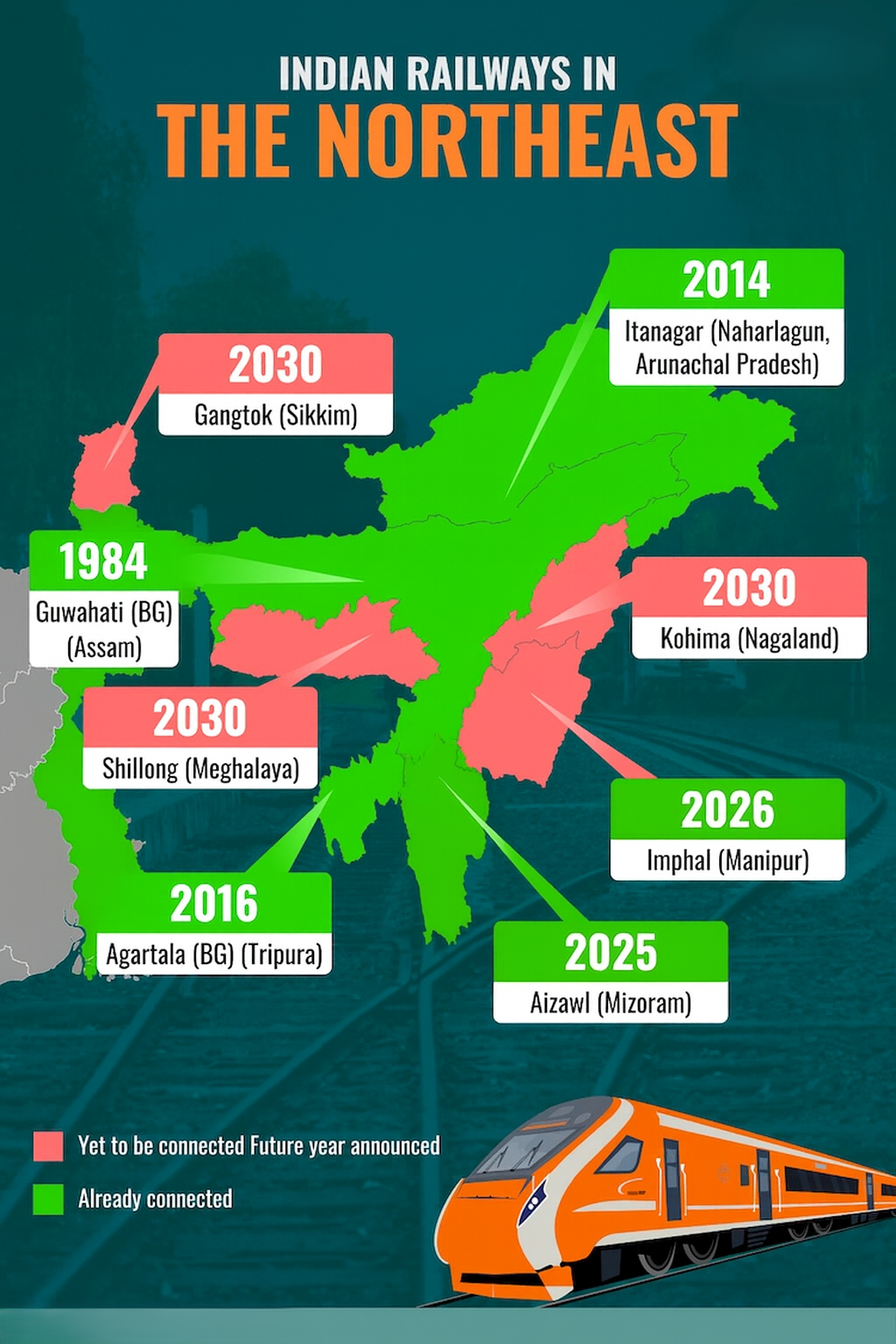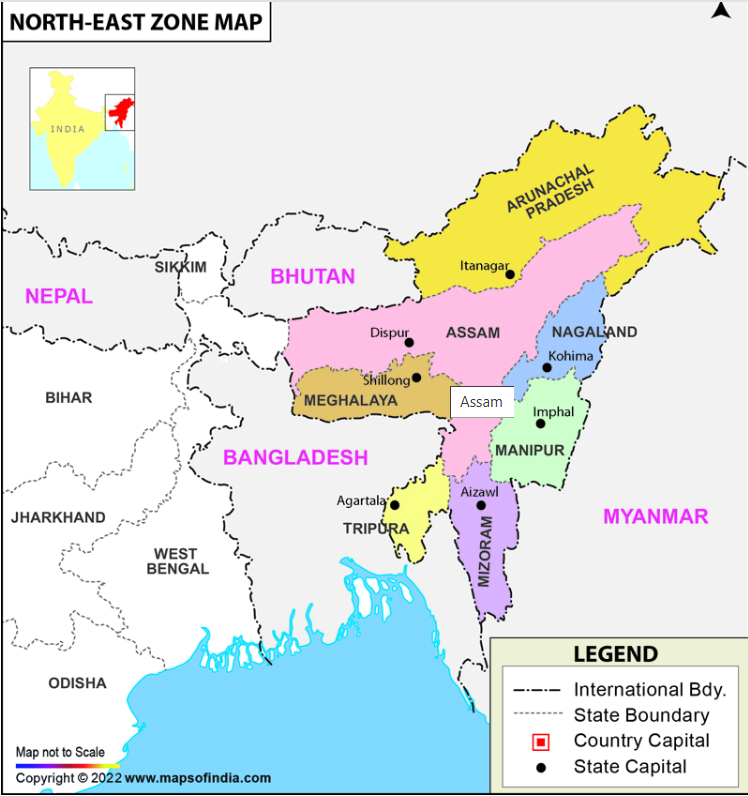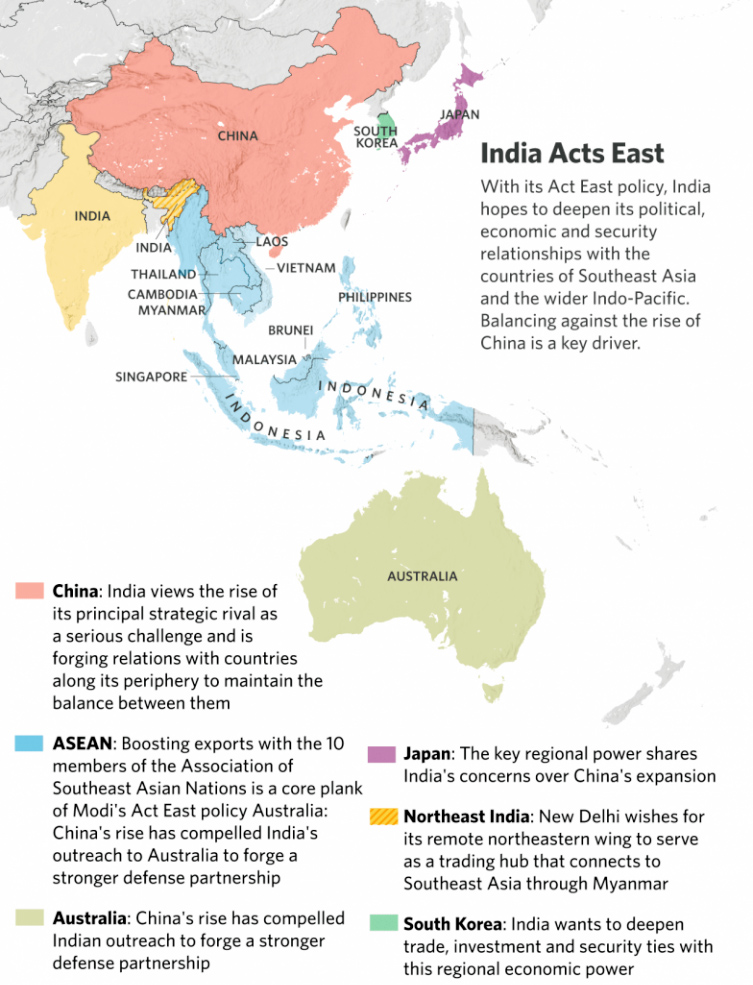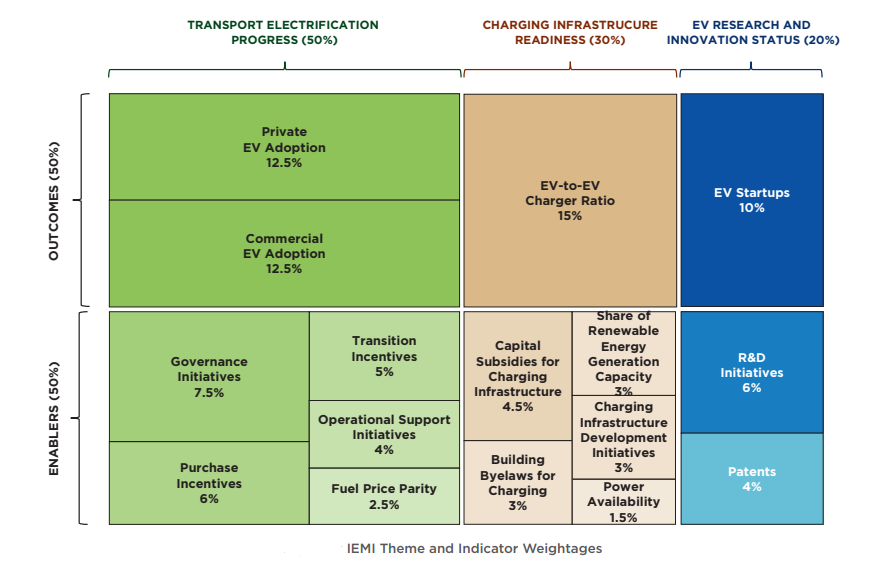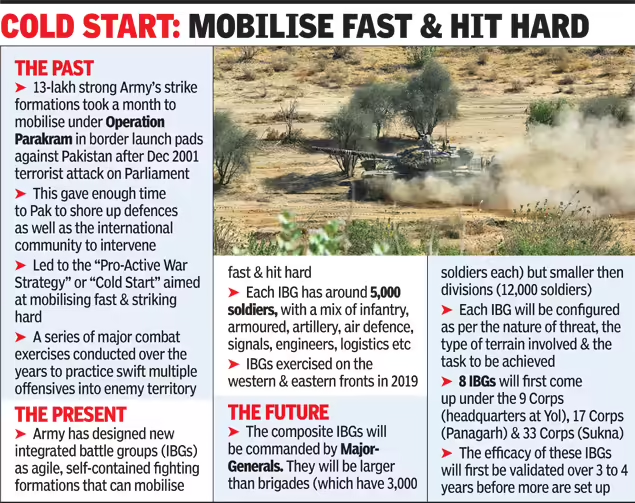Indian Polity
Parliamentary Panel Highlights Funding Cuts to Rural Bodies
For Prelims:Panchayati Raj Institutions (PRIs), 11th Schedule, State Finance Commissions (SFCs), GST, Gram Sabha, Finance Commissions. For Mains:Issues in Funding of Rural Local Bodies and Functioning of Panchayati Raj Institutions. |
Source: IE
Why in News?
The Standing Committee on Rural Development and Panchayati Raj has flagged the “steady decline in the allocation of funds to Panchayati Raj Institutions” and urged the Centre to take “urgent steps” to ensure that adequate, untied, and performance-linked funds are allocated to rural local bodies.
What are the Sources of Funds for Rural Local Bodies?
- Own Source Revenue (OSR): Rural local bodies generate funds independently through taxes (e.g., property tax, vehicle tax), non-tax revenues (e.g., fees for licensing, water supply), and other sources (e.g., penalties, user charges).
- Shared/Assigned Revenue: Revenues collected by higher levels of government (state or central) and shared with or assigned to rural local bodies include local cess and surcharges, shared entertainment tax, and share of mining royalties or lease proceeds from social forestry.
- Central Finance Commission Grants: The majority of Panchayat funds come from the central government, as recommended by the Finance Commission, including untied and tied grants.
- State Government Grants: State Finance Commissions recommend and state governments provide grants-in-aid and devolved funds to local bodies, on the basis of population, geographic area, and other criteria.
- Funds under Centrally Sponsored Schemes and State Schemes: These funds are routed through panchayats for the implementation of schemes such as MGNREGS (Mahatma Gandhi National Rural Employment Guarantee Scheme), PMAY-G (Pradhan Mantri Awas Yojana-Gramin), Swachh Bharat Mission, NRLM, and others.
- Special Grants: Under MP Local Area Development Scheme (MPLADS), MLA/MLC Local Area Development Schemes, Backward Regions Grant Fund (BRGF), etc.
What are the Issues Related to Funding of Rural Local Bodies?
- Decline in PRI fund Allocation: The parliamentary committee highlighted that consistent reduction in funds allocated to Panchayati Raj Institutions (PRIs) hampers fiscal decentralization and limits their ability to meet constitutional duties.
- The 2024 Devolution to Panchayats in States Report also highlights concerns over limited social audits, poor Gram Sabha participation, and inadequate financial disclosure, which hinder oversight and transparency.
- State Finance Commission (SFC) Constitution: The parlimentary committee emphasizes the need for states to timely constitute SFCs to ensure the proper flow of central grants, as delays in implementation, along with centralized GST and limited fiscal autonomy, hinder Panchayats' financial control.
- The committee noted that only 25 states have set up SFCs, and only nine constituted the 6th SFC.
- Also, the committee highlighted that while Punjab and Tamil Nadu have demonstrated strong compliance with SFCs, states like Arunachal Pradesh, Chhattisgarh, Gujarat, Jharkhand, and Telangana face delays in ATRs (action taken reports) submission.
- Inability to Address Local Needs: The committee highlighted that the reduction in untied and scheme-based transfers hampers PRIs' capacity to meet local development needs, impacting services, infrastructure, and social welfare.
- The 2024 Devolution to Panchayats in States Report also highlights that inconsistent transfer of 29 subjects (11th Schedule) due to state governments' fear of losing control limits Panchayats' decision-making authority.
- Institutional Flaws: Further, the 2024 Devolution to Panchayats in States Report highlighted concerns that rotating reserved seats for SCs, STs, and women disrupts leadership continuity, as new leaders bring different priorities and approaches.
- District Planning Committees (DPCs) are present but poorly implemented, and elected representatives lack adequate training in governance, budgeting, and planning.
Status of PRI Funding (Status of Devolution to Panchayats in States Report 2024)
- Revenue Composition: PRIs generate only 1% of revenue through taxes, indicating limited self-financing capacity.
- Around 95% of PRI revenues come from grants provided by the Central and State governments.
- Revenue Per Panchayat: Each Panchayat earns Rs 21,000 from own taxes and Rs 73,000 from non-tax sources.
- Central grants average Rs 17 lakh, and State grants are around Rs 3.25 lakh per Panchayat, showing high reliance on external support.
- Low Revenue Expenditure: The ratio of revenue expenditure of panchayats to nominal GSDP is less than 0.6% for all the states ranging from 0.001% in Bihar to 0.56% in Odisha.
- Inter-State Disparities: Kerala and West Bengal have the highest average revenue (over Rs 60 lakh and Rs 57 lakh), while states like Andhra Pradesh and Punjab report much lower revenues (less than Rs 6 lakh).
What are the Steps Needed to Improve Funding of Rural Local Bodies?
- Performance-Linked Resources: The parliamentary committee report urges allocating sufficient, untied, performance-linked resources to PRIs, ensuring fund protection and promoting transparency.
- Panchayats should enhance revenue through local taxes, with state support for better tax collection.
- Fund Allocation: The parliamentary committee report recommends that the Ministry of Panchayati Raj, in coordination with the Ministry of Finance and the Fifteenth Finance Commission, must urgently address the reduction in fund allocation, ensuring consistent, untied, and performance-linked financial support for PRIs.
- Regular fiscal transfers, aligned with states' capacity to finance Panchayats, are crucial for sustainable local governance, as opposed to ad-hoc grants, to ensure long-term growth and equalization across regions.
- State Finance Commissions (SFCs): The committee report recommends that the Panchayati Raj Ministry should encourage state governments to establish State Finance Commissions (SFCs) consistently to ensure timely devolution of funds and prevent delays in central grants distribution.
- States must improve adherence to SFC constitution and reporting requirements, ensuring regular submission of reports and Action Taken Reports (ATRs), with full implementation of recommendations to guarantee consistent Panchayat funding.
- Ensuring Transparency: The 2024 Devolution to Panchayats in States Report recommends that mechanisms should be established to safeguard PRI funds from diversion, promote transparency in fiscal transfers between government tiers, and ensure financial accountability through regular audits, RTI disclosures, and robust procurement procedures.
- Digital Infrastructure: The 2024 Devolution to Panchayats in States Report recommends that panchayats should serve as hubs for public services, improving access to government schemes, while enhancing digital infrastructure for better governance and transparency.
Conclusion
To ensure the effective functioning of PRIs, it is essential to prioritize timely devolution of funds, enhance revenue generation at the local level, and strengthen institutional mechanisms for transparency and accountability, while promoting sustainable governance practices and empowering rural bodies for long-term growth.
|
Drishti Mains Question Q. Discuss the implications of reduced funding to rural bodies on rural development. What measures can be taken to mitigate its effects? |
UPSC Civil Services Examination, Previous Year Questions (PYQs)PrelimsLocal self-government can be best explained as an exercise in (2017) (a) Federalism Ans: (b) Q. The fundamental object of the Panchayati Raj system is to ensure which among the following? (2015)
Select the correct answer using the code given below (a) 1, 2 and 3 only Ans: (c) MainsQ1. To what extent, in your opinion, has the decentralisation of power in India changed the governance landscape at the grassroots? (2022) Q2. Assess the importance of the Panchayat system in India as a part of local government. Apart from government grants, what sources can the Panchayats look out for financing developmental projects? (2018) |
Governance
Enhancing Northeast Connectivity for Act East Policy
|
For Prelims: Northeast region, Siliguri Corridor, India's Act East Policy, Sittwe Port, India–Myanmar–Thailand Trilateral Highway For Mains:Connectivity Challenges in North Eastern India, Act East Policy and Role of Northeast India |
Source: TH
Why in News?
India’s Act East Policy aims to transform the North-East into a gateway to Southeast Asia. The commissioning of the 51.38-km Bairabi–Sairang rail line in Mizoram is a key step toward this.
Northeast India’s Infrastructure Revolution: 11 Years of Connectivity and Growth (2014-2025)
- Infrastructure Transformation: The region has seen remarkable development in roads, railways, airports, and digital networks under initiatives like the Act East Policy and the North East Special Infrastructure Development Scheme (NESIDS).
- Rail Connectivity: Historic advances have been made in Arunachal Pradesh and Mizoram, including Mizoram receiving its first passenger train in independent India's history. Railway connectivity has also been extended to Manipur and Nagaland.
- The Bairabi–Sairang Rail Project in Mizoram is a key strategic initiative under India’s Act East Policy, aimed at boosting connectivity in the Northeast.
- Originally, Mizoram had only a 1.5 km metre-gauge line linking Bairabi (Kolasib district) to Silchar (Assam).
- Despite challenges like difficult terrain and manpower shortages, the project includes 48 tunnels (totaling 12.85 km) and 142 bridges, and received safety clearance in June 2025.
- The Bairabi–Sairang Rail Project in Mizoram is a key strategic initiative under India’s Act East Policy, aimed at boosting connectivity in the Northeast.
- Inland Waterways: Ro-Ro ferry services have been revived on the Brahmaputra, offering cost-effective cargo transport and boosting economic activity.
- Digital Connectivity: Digital infrastructure has expanded with programs like BharatNet and 4G saturation, connecting remote villages and bridging the digital divide.
- NESIDS Projects: The Government of India sanctioned 90 projects, under NESIDS to upgrade healthcare, education, drinking water, and public infrastructure, with 30 projects already completed.
- Economic Growth and Regional Integration: This infrastructure revolution has improved the quality of life, attracted private investment, and fostered regional development, positioning Northeast India as an important gateway for national and regional integration.
How Does Improving Regional Connectivity in Northeast India Align with India’s Act East Policy?
- Enhanced Diplomatic and Security Ties: Connectivity through projects like the Kaladan Multi-Modal Transit Project, IMT Trilateral Highway and Sairang’s strategic location will complement India’s efforts to strengthen trade and connectivity with ASEAN countries.
- Improved infrastructure fosters stronger ties with Myanmar, and Bangladesh, supporting India's strategic and security objectives in the region.
- Transhipment Hub: The Sairang railhead is poised to become an important transit point for goods moving from Myanmar's Sittwe Port , fostering closer regional economic integration.
- This rail line is a key piece of India’s long-term infrastructure projects designed to link the northeastern states with Southeast Asia.
- Socio-Economic Upliftment: Improved rail connectivity in the North-Eastern Region (NER) (NER) promotes job creation, regional integration, reduces geographical isolation, and links the region with the national mainstream.
- It also promotes better access to education, healthcare, and disaster response, helping bridge developmental disparities between the NER and the rest of India.
What is India’s Act East Policy?
- About: The Act East Policy, launched in November 2014, is an upgraded version of the earlier Look East Policy.
- It is a diplomatic and strategic initiative aimed at strengthening economic, cultural, and defence ties with the Asia-Pacific and Indo-Pacific regions, particularly Southeast Asia.
- Objective: To develop deeper ties with Indo-Pacific countries, enhance economic development in the North Eastern Region (NER), and position it as India’s gateway to Southeast Asia.
- Key Features: Focuses on connectivity, trade, defence, and people-to-people ties through multi-level engagement and proactive diplomacy with ASEAN and Indo-Pacific nations.
India’s Initiatives Promoting NE Connectivity
- PM Gati Shakti National Master Plan
- Act East Policy
- Special Accelerated Road Development Programme for NE (SARDP-NE)
- North East Special Infrastructure Development Scheme (NESIDS)
What are the Key Challenges in Implementing Regional Connectivity Under the India's Act East Policy?
- Geopolitical Challenges: Myanmar Civil Conflict (since 2021) has disrupted the Kaladan Multimodal Transit Transport Project.
- Bangladesh Political Instability (2024) has delayed the Agartala–Akhaura rail link, affecting access to Chittagong Port and regional trade integration.
- Security & Insurgency Risks: Ethnic clashes, e.g., Manipur conflict (2023), and persistent insurgencies deter investment.
- Key projects like Imphal–Moreh Rail Line and Asian Highway 1 are stalled due to regional unrest.
- Inadequate Infrastructure in Northeast India: The NER’s underdeveloped road, rail, and air linkages hinder its potential as a gateway to Southeast Asia under the Act East Policy.
- The Siliguri Corridor ("Chicken’s Neck"), only 22 km wide, is prone to disruption. Frequent floods, landslides, earthquakes, and fragile ecology hinder infrastructure work.
- Local opposition to large-scale projects like dams and mining due to environmental concerns.
- Multi-modal integration remains incomplete, limiting seamless regional connectivity.
- China Factor & Strategic Gaps: Rising Chinese influence in the region and India’s withdrawal from RCEP raise concerns about India's economic engagement in East Asia.
- Limited trade agreements and slow progress on connectivity weaken India’s regional leverage.
What Should Measures be Taken to Enhance Northeast Connectivity Under India’s Act East Policy?
- Strengthened Regional Diplomacy & Connectivity: India must strengthen strategic ties with Myanmar and Bangladesh to fast-track connectivity projects like the Kaladan Multi-Modal Transit Project and Agartala–Akhaura rail link.
- Leveraging regional groupings such as BIMSTEC and BBIN is crucial for enhancing cross-border trade, improving logistics infrastructure, and accessing key maritime hubs like Chittagong Port (Bangladesh) and Sittwe Port (Myanmar).
- Emphasis should also be placed on completing inland connectivity corridors such as the Dimapur–Zubza and Imphal–Moreh railway lines to strengthen India's linkages with ASEAN economies.
- Integrated and Resilient Infrastructure: India must develop multi-modal transport infrastructure (road, rail, air, waterways) under schemes like PM Gati Shakti, Bharatmala, and UDAN to support Act East objectives.
- Infrastructure should be disaster-resilient, tailored to the Northeast’s fragile terrain prone to floods, landslides, and earthquakes.
- Creating alternative connectivity routes is essential to reduce over-dependence on the Siliguri Corridor, ensuring uninterrupted access to Southeast Asian markets.
- Security-Sensitive and Inclusive Development: Connectivity under the Act East Policy must align with counter-insurgency measures, securing infrastructure in border and conflict-prone areas.
- Strengthening peace-building with Myanmar is vital for stable border management.
- Ensuring local participation through Environmental and Social Impact Assessments (ESIA), equitable compensation, and benefit-sharing will promote sustainability, inclusiveness, and regional stability.
- Institutional & Execution Reforms: Effective implementation of the Act East Policy requires governance reforms like single-window clearance for land acquisition and project approvals.
- Promoting PPPs and integrating transport, digital, and energy infrastructure will enhance economic integration and ensure timely execution of projects in the Northeast.
Conclusion
The Northeast is not just India's frontier but also its gateway to Southeast Asia. Unlocking its potential through robust and inclusive connectivity will not only empower the region socio-economically but also strengthen India’s geostrategic standing in the Indo-Pacific. Success lies in balancing infrastructure push with ecological sensitivity, strategic diplomacy, and local cooperation.
|
Drishti Mains Question: Q. Discuss the role of regional connectivity in enhancing India's Act East Policy with reference to the Northeast. What geopolitical challenges impede this vision? |
UPSC Civil Services Examination, Previous Year Questions (PYQs)PrelimsQ.1 The term ‘Regional Comprehensive Economic Partnership’ often appears in the news in the context of the affairs of a group of countries known as (2016) (a) G20 Ans: (b) MainsQ. Cross-border movement of insurgents is only one of the several security challenges facing the policing of the border in North-East India. Examine the various challenges currently emanating across the India- Myanmar border. Also, discuss the steps to counter the challenges. (2019) |
Facts for UPSC Mains
Global Energy Status
Source:DTE
Why in News?
The International Energy Agency’s Electricity Mid‑Year Update 2025 highlights rising power demand fueled by heatwaves, air conditioners, data centres, and electric vehicles, while solar, wind, and nuclear energy rapidly reshape the global electricity mix.
What are the Key Highlights of the IEA's Electricity Mid-Year Update 2025?
- Global Electricity Demand Forecast: Global electricity demand is projected to grow by 3.3% in 2025 and 3.7% in 2026, well above the 2015–2023 average of 2.6%.
- India and China will together contribute 60% of global demand growth through 2026, with India growing at 4% in 2025 and 6.6% in 2026.
- Coal and Renewable Energy Outlook: Solar and wind are set to surpass coal generation by 2025 or 2026, with their share growing from 15% in 2024 to 20% by 2026. Solar and wind will account for over 90% of the increase in electricity demand in 2025.
- As a result, coal's share in total generation is set to drop below 33% for the first time in the last 100 years.
- Growth in Nuclear Power: Global nuclear power generation is set to reach a record high in 2025, rising by 2% over 2025-26, driven by new reactor installations (in China, India, South Korea) and plant restarts (in Japan).
- Electricity Security: Blackouts in Chile and Spain/Portugal emphasize the need for robust grid infrastructure, secure supply chains, and flexibility resources to ensure electricity security.
- Emissions: Global emissions rose by only 1.2% in 2024, despite extreme weather.
- Low-emission sources (renewables + nuclear) are offsetting fossil fuel use, though unpredictable weather still affects year-to-year trends.
What is India’s Energy Landscape?
- Installed Electricity Capacity by Source (As of June 2025):
|
Source |
Capacity(GW) |
Percentage Share |
|
Thermal |
242.04 |
49.92% |
|
Nuclear |
8.78 |
1.81% |
|
Large Hydro (LH) |
49.38 |
10.19% |
|
RenewableEnergy(RE) |
184.62 |
38.08% |
|
Total |
484.82 |
100% |
- Fossil vs Non-Fossil Energy Share in Installed (As of June 2025):
|
Category |
Capacity (GW) |
Percentage Share |
|
Fossil Fuel (Thermal) |
242.04 |
49.92% |
|
Non-Fossil Fuel (RE + LH + Nuclear) |
242.78 |
50.08% |
|
Total |
484.82 |
100% |
- Renewable Energy: Solar power holds the largest share in RE, contributing 47.06% of the total non-fossil capacity, followed by wind power at 21.78%.
- Hydropower accounts for 20.35%, while bio power contributes 4.92%. Nuclear energy makes up 3.73%, and small hydro power holds a share of 2.17%.
- As per International Renewable Energy Agency (IRENA) RE Statistics 2025, India ranks 4th globally in Renewable Energy Installed Capacity, 4th in Wind Power, and 3rd in Solar Power capacity.
- Oil, Gas, and Bioenergy: Liquefied Petroleum Gas (LPG) connections grew from 14.5 crore to 33 crore (2014–2025).
- India achieved 20% ethanol blending in petrol in 2025. The blend rose from just 1.5% in 2014 to 20% in 2025.
- Biopower capacity rose from 8.1 GW to 11.6 GW, and Compressed Biogas (CBG) capacity grew from 1 project (8 Tonnes per Day (TPD)) in 2014 to 150 projects (1,211 TPD) by March 2025.
- Electricity Security: Power shortages dropped from 4.2% in 2013–14 to 0.1% in 2024–25. Per Capita Electricity Consumption Up by 45.8% (from 957 kWh to 1,395 kWh)
- India achieved 100% village electrification by April 2018 and has since connected more than 2.8 crore households to the grid.
- Flagship Renewable Schemes:
|
Scheme |
Objective |
|
Promote solar energy use in agriculture |
|
|
Rooftop solar for 1 crore homes |
|
|
Infrastructure for large-scale solar projects |
|
|
Boost domestic solar photovoltaic manufacturing |
|
|
Waste-to-energy, biomass, and biogas for power generation |
|
|
Electrify tribal/PVTG households using off-grid solar |
|
|
Make India a global hub for green hydrogen production |
International Energy Agency
- The IEA is an autonomous intergovernmental organization within the Organisation for Economic Co-operation and Development (OECD) framework.
- The IEA, founded in 1974 in Paris in response to the 1973-1974 oil crisis, addresses oil supply disruptions.
- It focuses on energy security, economic development, environmental awareness, and global engagement.
- The IEA has 32 member countries and 13 association countries. India joined as an Associate member in 2017.
- The IEA has invited India to become a full-time member, recognizing its growing influence in global energy trends.
- The IEA conducts energy policy analyses and publishes reports like the World Energy Outlook, and World Energy Investment Report.
|
Drishti Mains Question: Q. What are the initiatives taken by India to position itself as a global leader in renewable energy, and how successful have they been? |
UPSC Civil Services Examination, Previous Year Question (PYQ)Mains Q. Describe the benefits of deriving electric energy from sunlight in contrast to the conventional energy generation. What are the initiatives offered by our Government for this purpose? (2020). |
Facts for UPSC Mains
India Electric Mobility Index and EVs in India
Source: PIB
Why in News?
NITI Aayog launched the India Electric Mobility Index (IEMI) along with its report titled ‘Unlocking a 200 Billion Dollar Opportunity: Electric Vehicles in India’.
What is India Electric Mobility Index (IEMI)?
- About: The IEMI tracks and evaluates the progress of Indian States and Union territories (UTs) in achieving their electric mobility goals.
- Core Themes: The IEMI uses 16 indicators under the three themes to assess performance.
- Transport Electrification Progress: Measures the adoption of electric vehicles and demand-side factors.
- Charging Infrastructure Readiness: Assesses the development and availability of EV charging stations and related infrastructure.
- EV Research and Innovation Status: Tracks R&D efforts, patents, and innovation in the EV sector.
- The IEMI score is a composite score on a 0-100 scale reflecting a state’s performance in developing the e-mobility ecosystem.
- IEMI 2024:
- Frontrunners (Score: 65-99): Delhi, Maharashtra, Chandigarh.
- Performers (Score: 50-64): Karnataka, Tamil Nadu, Haryana.
- Aspirants (Score: 0-49): States and UTs like Odisha, Rajasthan, Uttar Pradesh, Ladakh, Andhra Pradesh, and others are lagging in their e-mobility initiatives and require targeted interventions.
- Impact on Policy: The IEMI offers a comparative framework for states to benchmark progress, identify gaps, and learn from each other.
- It fosters healthy competition and supports evidence-based policymaking, allowing states to tailor their electric mobility strategies using data-driven insights and best practices.
What are the Key Highlights of NITI Aayog Report on Electric Vehicles in India?
- India's EV share was one-fifth of global levels in 2020, now at over two-fifths in 2024.
- India must now increase EV share by 22% in just 5 years to meet its 2030 goal (30% EV penetration by 2030 under the EV30@30 campaign)
- Manufacturing capacity has expanded through schemes like the PLI Scheme and National Programme on Advanced Chemistry Cell (ACC) Battery Storage.
- EVs in India: According to the NITI Aayog report "Unlocking a 200 Billion Dollar Opportunity: Electric Vehicles in India", EV penetration rate in India increased from 0.23% in 2016 to 7.6% in 2024. In comparison, the global EV penetration rate grew from 3.08% to 16.48% in the same period.
- Government Initiatives: Electric Mobility Promotion Scheme 2024, FAME-II (Faster Adoption & Manufacturing of Electric Vehicles in India) and PM Electric Drive Revolution in Innovative Vehicle Enhancement (PM E-DRIVE) have supported EV adoption, charging infrastructure, and manufacturing capacity.
- Challenges: Financing issues, especially for procurement of electric buses and electric trucks.
- Inadequate charging infrastructure and low utilization of existing public charging facilities.
- Lack of awareness regarding EV performance. Data and regulatory gaps hinder evidence-based decision-making.
- Recommendations: Implement a clear policy with timelines for Zero Emission Vehicle (ZEV) adoption, expand Corporate Average Fuel Efficiency (CAFE) norms, and disincentivize Internal Combustion Engine (ICE) vehicles.
- Instead of spreading efforts thinly, focus on saturating 5 cities with EVs, with a gradual then expansion to 100 cities. Involve state-level entities to manage and coordinate the program effectively.
- Create a pooled fund for e-buses and e-trucks, identify high-density corridors of EVs and establish charging hubs, and promote battery leasing along with leasing industries for EVs.
|
Drishti Mains Question: Q. India aims for 30% electric vehicle penetration by 2030. What are the major barriers to achieving this goal and suggest targeted policy interventions. |
UPSC Civil Services Examination, Previous Year Question (PYQ)MainsQ. The adoption of electric vehicles is rapidly growing worldwide. How do electric vehicles contribute to reducing carbon emissions and what are the key benefits they offer compared to traditional combustion engine vehicles? (2023) |
Rapid Fire
Pradhan Mantri Kisan Sampada Yojana
Source: TH
The Union Cabinet has approved a total outlay of ₹6,520 crore for Pradhan Mantri Kisan Sampada Yojana (PMKSY) during the 15th Finance Commission Cycle (2021–22 to 2025–26). This includes an additional ₹1,920 crore for enhancing food processing infrastructure and safety measures.
- Key Approvals:
- 50 Multi-product Food Irradiation Units under Integrated Cold Chain and Value Addition Infrastructure (ICCVAI).
- 100 NABL-accredited Food Testing Labs (FTLs) under Food Safety and Quality Assurance Infrastructure (FSQAI).
- Pradhan Mantri Kisan Sampada Yojana:
- It is a composite scheme designed to create modern infrastructure for efficient farm-to-retail supply chain management.
- Major Components:
- Mega Food Parks
- Integrated Cold Chain & Value Addition Infrastructure (ICCVAI)
- Infrastructure for Agro-Processing Clusters
- Creation of Backward & Forward Linkages
- Expansion of Food Processing & Preservation Capacities
- Food Safety & Quality Assurance Infrastructure (FSQAI)
- Human Resource Development & Institutions
|
Read More: Pradhan Mantri Kisan SAMPADA Yojana, Revolutionizing India's Food Processing Landscape |
Rapid Fire
Matri Van Initiative
Source: PIB
The ‘Matri Van’, a large-scale urban afforestation initiative under the ‘Ek Ped Maa Ke Naam’ campaign, was launched as part of Van Mahotsav 2025 in Gurugram, Haryana.
- About: A theme-based urban forest project spread over 750 acres in the Aravalli hill region along the Gurugram-Faridabad Road, Haryana.
- Objective: To promote biodiversity conservation, carbon sequestration, public health, and urban sustainability in NCR.
- Key Features:
- Ecological & Community Focus: Restoration through removal of invasive species (e.g., Prosopis juliflora), plantation of native trees, and public participation to promote sustainability and health.
- Thematic Groves & Eco-Infrastructure: Includes Bodhi Vatika, Bamboosetum, etc., along with nature trails, cycle tracks, yoga zones, treated water irrigation, waterbodies, and flood-control measures.
- Significance: Supports Aravalli ecosystem restoration, combats urban heat islands, reduces air pollution, and acts as the “Heart and Lung” of Delhi-NCR.
‘Ek Ped Maa Ke Naam’ Campaign
- Launched on 5th June 2024 (World Environment Day) by the Prime Minister, it promotes tree plantation in mothers’ names, combining environmental conservation with a tribute to motherhood.
Aravalli Green Wall Project
- Aims to develop a 1,400 km long, 5 km wide green belt across Haryana, Rajasthan, Gujarat, and Delhi, inspired by the Great Green Wall Project (2007), to combat desertification and enhance ecological resilience.
|
Read More: Aravali Green Wall Project, Critical Threats Facing the Aravallis |
Rapid Fire
AI-designed Proteins to Generate Immune Cells
Source: TH
Harvard scientists have used AI-designed proteins to generate large numbers of immune cells, boosting immunity against diseases like cancer and viral infections.
- They engineered a synthetic activator for the Notch signalling pathway, which is crucial for transforming immune progenitors into T cells.
- Notch signalling helps maintain tissue balance and stability in the body.
- Progenitor cells are intermediate cells between stem cells and mature cells that divide and differentiate into specific cell types, essential for tissue development and regeneration.
AI-designed Proteins
- Mechanism: Using AI-based protein design techniques, researchers engineered synthetic protein activators that are safe and effective for use within the human body.
- David Baker was awarded the 2024 Nobel Prize in Chemistry for his groundbreaking work in computational protein design, leveraging AI-based techniques.
- Impact & Applications:
- Enabled large-scale T cell production in lab bioreactors, aiding CAR-T therapies.
- In animal trials, these proteins enhanced T cell response and promoted long-lasting Memory T cells, boosting vaccine efficacy.
- Potential for future therapies, targeted protein designs could connect T cells to cancer cells, enhance anti-tumor immunity, and counter tumor-induced immune suppression.
T Cells:
- T cells are a type of white blood cell (WBC) essential to the immune system, responsible for identifying and responding to pathogens.
|
Read More: CAR-T Cell Therapy |
Rapid Fire
Indian Army Adapts Tactics to Counter Two-Front Threats
Source: TOI
The Indian Army is undergoing structural and technological upgrades to become a future-ready force amid rising threats from China and Pakistan, especially post- Operation Sindoor.
- It aims to create self-contained integrated battle groups (IBGs) of soldiers.
Key Structural & Technical Upgrades
- Rudra All-Arms Brigades: Single-arm brigades are being restructured into integrated combat units combining infantry, tanks, artillery, engineers, Unmanned Aerial Vehicles (UAVs), and Special Forces, customised for specific operational roles.
- Bhairav Light Commando Battalions: Planned raising of 40–50 agile, lethal battalions for swift border incursions; to supplement existing Para-Special Force (SF) and Para (Airborne) units.
- Artillery & Drone: The Army is raising ‘Shaktibaan’ artillery regiments with special ‘Divyadrishti’ surveillance and loitering munitions batteries for precision strikes.
- Over 400 infantry battalions will be equipped with dedicated drone platoons, with a strong push for UAV integration across combat formations.
- Army Air Defence (AAD): Strengthened with 2 Akash Prime and 3 Quick Reaction Surface-to-Air Missile (QRSAM) regiments for high-altitude and rapid response, with IAF support.
Integrated Battle Groups (IBGs):
- IBGs are brigade-sized, agile, and self-sufficient combat formations designed to swiftly launch strikes against adversaries during hostilities.
- They are tailored for rapid mobilisation and effectiveness in modern, high-tempo warfare.
|
Read More: Modernising India’s Defence |

